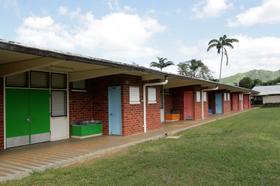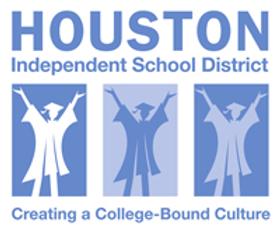The Los Angeles Unified School District is the largest school system in California and the second largest in the country. With nearly 700,000 students to serve, it should not be a surprise that this school district faces many challenges on a daily basis. Check out these 10 issues the Los Angeles Unified School District must cope with in order to bring the highest possible quality of education to its thousands of students every day.
Diversity
According to Wikipedia, the student population in the Los Angeles Unified School District is a highly diverse one. The enrollment breakdown consists of 73 percent Hispanic students, 11 percent African-American students, nine percent white students and four percent Asian American students. The diversity of the population presents unique challenges for the district, as it strives to provide the same standards of education to students with broad backgrounds.
Overcrowding
Schools in the Los Angeles Unified School District have been traditionally overcrowded, with concerns about the situation dating back decades. In an effort to relieve some of the crowding issues, Policy Analysis for California Education (PACE) reports that the district has built 130 new school buildings over the past decade for a cost of more than $19 billion. Most notable is the Robert F. Kennedy Community Schools, which is the most expensive public school built in America. The money invested appears to be paying off, as test scores for students in the less crowded facilities appear to be on the rise.
In this video, Superintendent Dr. Michelle King discusses the district's challenges.
Large Class Sizes
In addition to overcrowding, class sizes have been growing in recent years, which presents substantial challenges to the teachers facing a large and diverse classroom every single day. The National Education Association states that classes that held 28 students a few short years ago are now holding as many as 40 students or more. That growth puts additional strain on teachers, who must plug more hours to keep up with more students. Some teachers are also concerned for student safety in such large classrooms.
Low Completion Rates
The Daily News reported earlier this year that just 61.6 percent of the class of 2011 in the Los Angeles Unified School District earned their diplomas. This number was slightly down from the 62.4 percent who completed high school the year prior. The low completion rates have plagued the school district for some time, which may be attributed to the diverse student population, budget woes for the district and numerous students pushed out of the school system by multiple suspensions.
In this video from 2008, the district superintendent discusses the challenges of urban education.
Funding Cuts
Like any school district across the country, the Los Angeles Unified School District has been plagued by budget cuts in recent years. However, when dealing with the large number of schools and students that this district is responsible for, funding cuts are that much deeper. The recent passage of a tax increase initiative will help stop the bleeding for the schools, by preventing further budget cuts. However, schools are still struggling to stay in the black as they work to accommodate thousands of students each day.
Low Academic Performance
Another problem that has traditionally plagued Los Angeles schools is low academic performance among students. This may be attributed in part to diversity as well – around one-third of all the students in the district are English language learners. Another contributing factor is crowding in schools. The district is quickly learning as it adds more school buildings and classrooms that less crowding typically leads to higher test scores overall.
Conflict with Teachers Unions
In a problem faced by other school district nationwide, the Los Angeles Unified School District finds itself in a clash between school administrators and the teachers unions. The Huffington Post recently reported that the district lost a large sum of Race to the Top funding from the federal government because a teachers union refused to sign the grant application. In addition to the disagreements over teacher evaluations, the union told the Huffington Post that Race to the Top would “cost more than it brings in.”
Cheating Allegations
As a number of schools within the Los Angeles Unified School District have lost their ratings on the Academic Performance Index for the state in recent years, allegations of cheating on standardized tests have also arisen. The Los Angeles Times reports that the most recent complaints involving cheating and mistakes on statewide tests were focused on Short Avenue Elementary. The principal of that school recently retired amid the investigation, and the three teachers suspected of cheating at the school have also since retired.
Poor Maintenance of School Buildings
The Los Angeles Unified School District originated in 1948, and some of the buildings still used are decades old. When the age of the building is combined with overcrowding and not enough money to go around, deterioration of the building can result. The district has added many new buildings to pick up the slack, but issues involving the safety and viability of older buildings persist.
Administrative Problems
Administrative problems can be a recurring theme at many school districts, but when the district is as large as Los Angeles, the problems tend to become magnified. The spending on new buildings has been just one of the questions raised by parents and community members in recent years. Conflicts have also arisen over how cheating allegations have been handled and consistently poor academic performance and completion rates.
In this video, Emilio Pack talks about the challenges of dealing with LAUSD, the importance of putting all students first, and questions why adult issues are still getting in the way of what's best for children.
The Los Angeles Unified School District is a massive system that is not without its share of issues. While officials, administrators and faculty work toward resolving at least some of those issues, the size of the problem suggests solutions may be a long time in coming.
Questions? Contact us on Facebook.. @publicschoolreview















